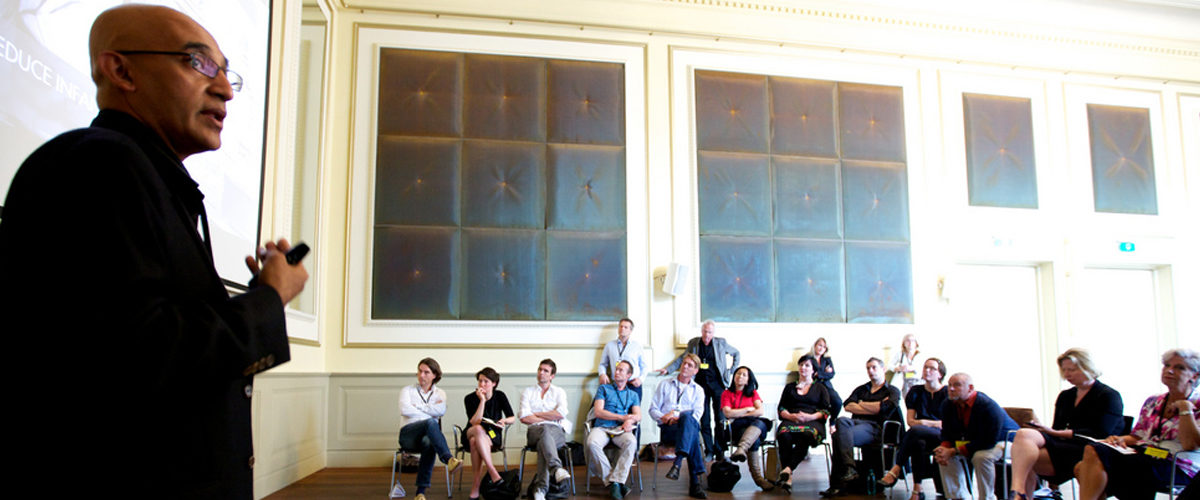
Being invited to present research in a conference is a milestone in every academic’s life. You’re now ready to exhibit your work to an audience outside peer-reviewed journals. However, a paper and a presentation are two separate things, so you can’t directly translate one into the other.For example, plenty of content is necessary for a scholarly paper, but you’ll have to filter out some of it in a conference. Although general rules apply in conference presentations, there are more nuances to consider. Some of these may come in the form of overly quoting your research or forgetting to clarify your points.
Basic Formula
If you’re a conference first-timer, it’s advisable to stick to a specific outline for your academic presentation.Sociology professor Tanya Golash-Boza provides a basic formula on her personal site for fellow scholars. You still begin with an introduction before providing your framework, methodology, and related literature. You can then conclude your presentation with data or research analysis.Essentially, its flow should remain similar to your paper’s. It depends on your field of study, but using this formula as a guide helps you structure your speech. The only difference is that you condense your information for your slides, making it more palatable for your crowd.This doesn’t necessarily mean you’ll be compromising a large chunk of your research.This doesn’t necessarily mean you’ll be compromising a large chunk of your research. If anything, the discussion of your study should take up the bulk of your academic presentation. In this situation, you’re presenting to a crowd of like-minded individuals who are interested in your work. Chances are they’ve already looked it up enough to have a general idea of it, so don’t dwell on parts that your audience already knows.
Delivering the Research Paper
Conference presentations are often misinterpreted as word-for-word readings of the research paper. However, it’s highly encouraged to use a conversational tone to engage your audience. After all, they’re still people who’ll get bored with long lectures. Citing directly from your material isn’t necessarily a bad thing, either.Since quoting previous studies and scholars is inevitable in an academic setup, it’s all right to occasionally refer to them. Just make sure you use to clue your audience in on an upcoming quote from your paper. A few examples of signal phrases are statements like “According to this theorist” or “This theorist argues that” to make the change in tone seem less random and stiff when you mention your sources.As long as you keep track of the time, it’s also okay to read from your notes when you’re expounding on major ideas. Spend about one to two minutes on an important point in your study, then move on.
Visual Presentation
Its use of more research material distinguishes a conference PowerPoint from other presentations. Aside from the visual and textual prompts in your slides, you’ll need to include data and excerpts from your paper. Don’t overdo it, though. Present only the important parts of your research.Overloading people with information will confuse them. They’re more likely to lose your thesis statement if you saturate the presentation with too many minor facts. Any supporting material can be mentioned briefly, outside the slide. At the same time, remember to address each bit of information you put on screen.Your audience will appreciate an explanation of your main points. For other, less technical slides, you can mark your paper with prompts. This will help remind you which part of your presentation has a corresponding visual aid.
Conclusion
Keep a few extra things in mind when preparing for a conference presentation. Apply your research paper’s outline, but condense and edit its content to fit time constraints. Reading your paper verbatim makes you look too technical and stiff during your speech.Listeners feel more at ease with speakers who are confident with their material. Don’t drag your audience through your slides. Limit your explanations to a few minutes before moving on to the next point. A compact and comprehensive presentation is more impressive than a rambling one.Need help with your presentation? Contact our SlideGenius experts today and get a free quote!
References
Boza, Tanya-Golash. “How to Give a Fabulous Academic Presentation: Five Tips to Follow”. Get a Life, PhD. April 20, 2011. www.getalifephd.blogspot.com/2011/04/how-to-give-fabulous-academic.html Featured Image: “Creative Company Conference 2011” by Sebastiaan ter Burg on flickr.com





